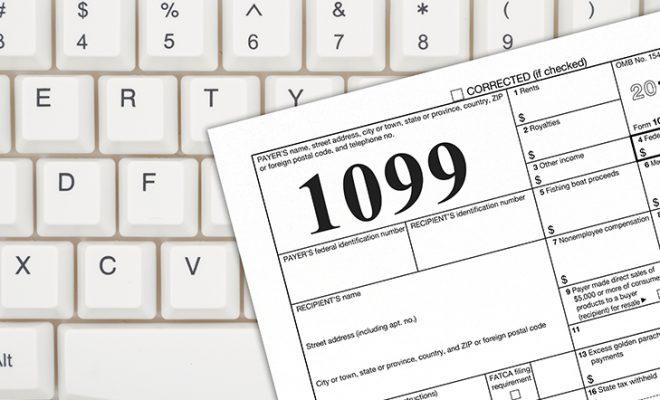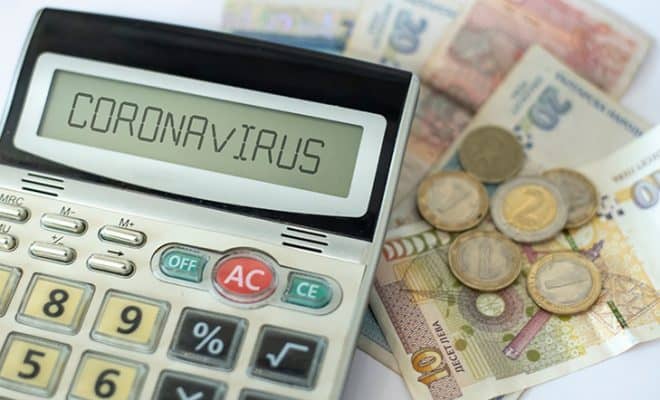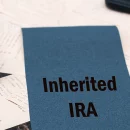Things You Can Learn From 1099 Forms

Many individuals have more than one source of income. The money may not necessarily come from employment but other avenues such as interest on deposits, dividends, capital gains, retirement plan distributions, freelance projects, and more. When accounting for taxes, all these sources of income need to be assessed too. Your tax liability will be determined based on your cumulative revenue from the offset of deductions, exemptions, returns, profits, etc. from all of these sources. These incomes need to be fairly reported, and that is what gives rise to the need for Form 1099. The form typically accounts for the money you receive from sources other than your primary employment. It is generated by the person who paid you the amount. One copy of the form is sent to the IRS, while the other is directed to your address.
To avoid confusion and improve transparency in reporting, there are various types of the Form 1099, such as:
- 1099-A: Accounts for mortgage returned or cancelled by the lender or any short sales of the house.
- 1099-B: Covers income from securities sold.
- 1099-C: Provides information on the debts settled for a lower value than original.
- 1099-CAP: Provides information on the income, stocks, or any other asset received from the sale, acquisition, or a significant change in the company in which the shares are held.
- 1099-DIV: Reports all dividends earned.
- 1099-G: Records income in the form of tax refunds, credit, or any other form directed by the government.
- 1099-INT: Reports interest income of more than $10. This includes interest from a financial institution, bank, brokerage, etc.
- 1099-LTC: Any benefits received from insurance policies such as life insurance or accelerated death benefits.
- 1099-MISC: Records all money received from other sources such as prizes, awards, gifts, etc.
- 1099-NEC: Typically records income from freelancing projects.
- 1099-OID: Reports income from purchase or redemption of financial instruments.
- 1099-PATR: Accounts for patronage dividends.
- 1099-Q: Accounts for money received from a 529 plan.
- 1099-R: Reflects distributions earned from pension or retirement savings like the individual retirement account (IRA), etc.
- 1099-S: Used for money earned from real estate proceedings.
- 1099-SA: Records any distributions taken from a health savings account
As explained, not all these forms imply that you have taxes due, though they will necessarily record your earnings from other sources. The type of Form 1099 you receive from a person depends on the kind of income you earn. This needs to be filed very carefully while accounting for taxes, and you must understand the concept completely.
Table of Contents
Some important things to learn from the 1099 forms
1. Tax Approach
Form 1099 provides a detailed analysis of the type of tax approach you are following, by explicitly listing down qualified and non-qualified dividends. The goal must be to take a tax-efficient strategy by including more qualified dividends. These dividends are categorized under capital gain taxes, which attract lower taxes than income tax rates applicable to non-qualified dividends. If you have multiple non-qualified dividends or high-paying qualified dividends in a taxable account, it is wiser to transfer them all to a tax-sheltered account to save on taxes.
2. Streamlined Portfolio
Form 1099 can tell you a lot about your portfolio. If you receive too many forms from different entities, consider it an alarm to streamline your portfolio, as it may be more crowded than it should be. Always keep in mind that diversification is not always ideal, and it needs to balance with stability. Hence, the ideal scenario would be to consolidate your portfolio and limit the income sources to a manageable number.
3. Maximization of Income
While receiving the Form 1099 helps you learn various things about your taxes and investment strategy, the absence of it also signifies a critical detail. Not receiving the form suggests that you are not making money from your money, and that is essentially not a good thing. This implies that your income from other sources is less than $10, which directly indicates that you have cash lying idle, accumulated in accounts that are not fetching enough profit in the form of interest.
Form 1099 acts as a wakeup call to invest in options that provide higher yields. Finding ways to increase your funds and letting your money grow is vital for all individuals regardless of how much they earn from their jobs.
4. Balance of Tax-Free Income
If the Form 1099-DIV depicts a very high tax amount for the dividends you earn, there may be something wrong in your approach. If you compare yields of two options – one fund which is tax-free and another which is taxable, the income you earn from the former will be higher than the latter for obvious reasons – lower taxes. But, if you have not made wise investments, your chances of paying more taxes also increase because of non-tax-free investments. This critical information from Form 1099 can be very useful while making future investments.
5. Foreign Security Tax
Another critical information you can learn from your Form 1099 is about the placement of your foreign securities. Ideally, your foreign securities should be placed in accounts which allow for deduction or credit for foreign taxes that have already been paid. If you have not placed your concerned securities in these accounts, you will be liable to pay taxes twice, once in the company’s origin country and once in your nation. With the help of Form 1099, you can obtain complete clarity on how much you are paying as foreign taxes. You can then accordingly correct the deviations to minimize tax liability, if not in the current tax-paying year then for the following one. These foreign funds also cover U.S funds which deal in foreign securities.
6. Capital Gain Tax
A very significant learning from Form 1099-DIV is to know how much you are paying as capital gain taxes, and if it is at the minimum possible value. As an investor, you are liable to pay capital gain taxes for the mutual funds and other securities you earn your profits from. Given the growing economic size of businesses, these distributions tend to get larger and hence, result in a hefty capital gain liability.
This can be minimized if you are wise and select funds such as tax-managed funds, traditional index funds, etc. These help to lower the overall capital gain tax liability by providing exceptions and exclusions. The primary aim is to use Form 1099 to analyze if you have minimized your capital gain tax liability as much as possible.
To sum it up
When you receive Form 1099 (of any kind), there is no need to panic. You might not typically like receiving these forms, but they can prove to be useful if you study them wisely and make modifications from your learning. These forms help you file your taxes more accurately. They also provide valuable information on your investments, as well as tax and income efficiency, which can help save many dollars every year. Be sure to comply with these forms carefully. There must be complete authentication because if the numbers do not match with the Internal Revenue Service’s (IRS) file, your name could show up on the tax audit list.
If you find these forms too complex to handle, you can always approach a professional financial advisor for help.

















